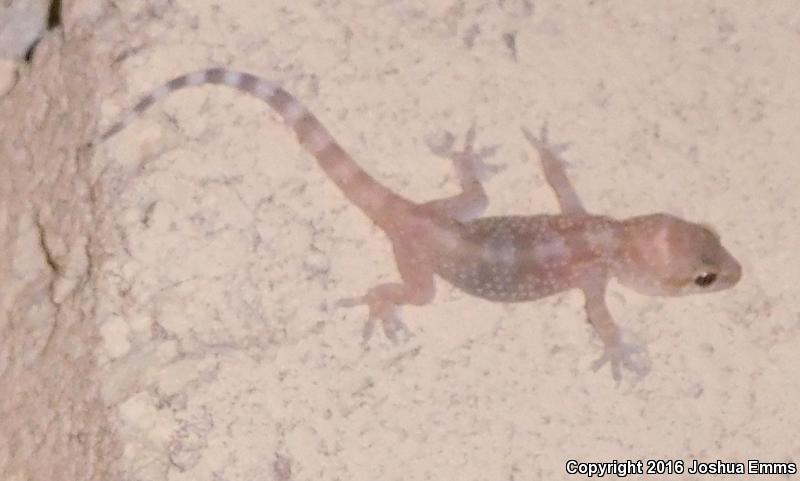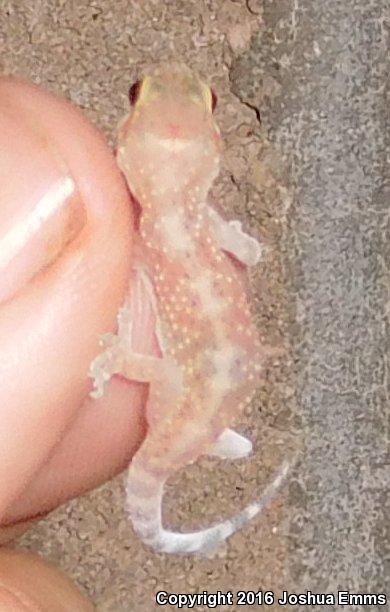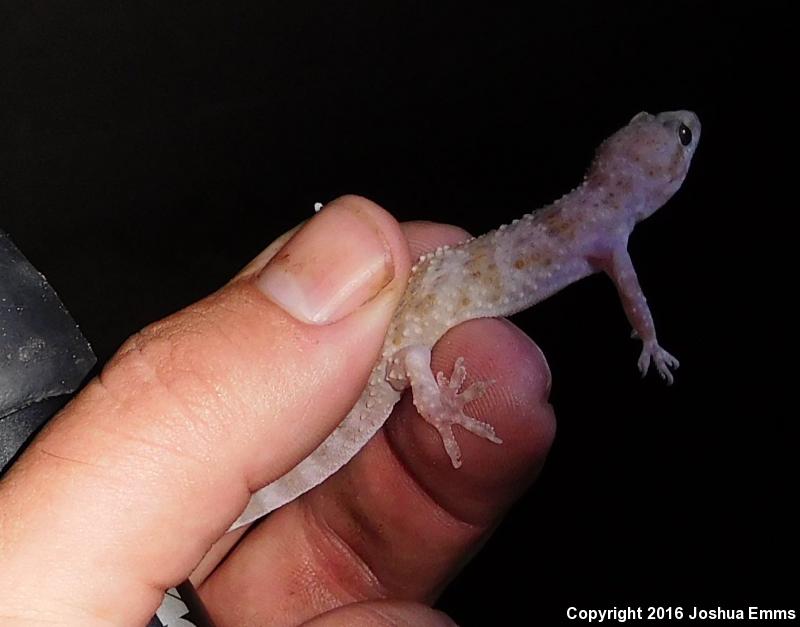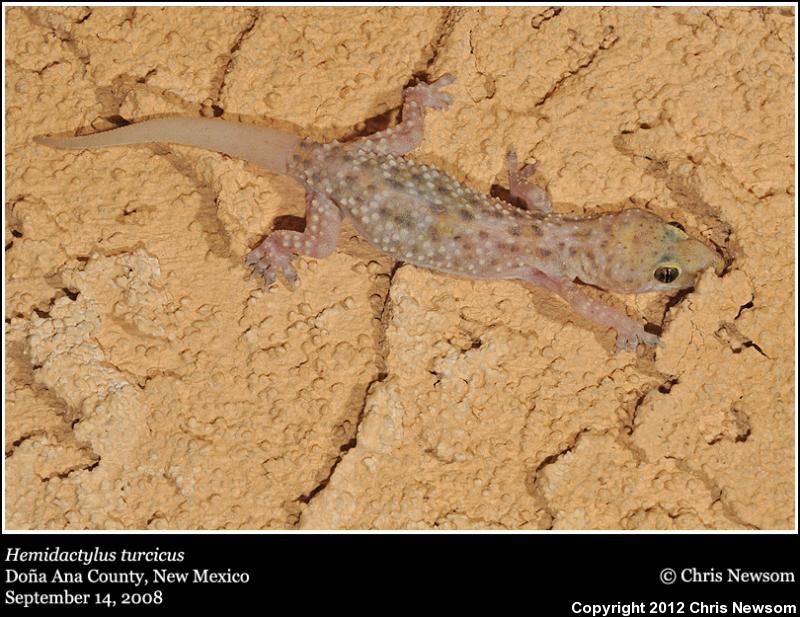| Range: |
 They have been found in Las Cruces, Alamagordo, Elephant Butte, Socorro, Deming and Albuquerque They have been found in Las Cruces, Alamagordo, Elephant Butte, Socorro, Deming and Albuquerque |
| Other Names: |
Turkish House Gecko, Med Gecko, Gecko, House Gecko, Turkish Gecko, Moon Lizard |
| Description: |
They rarely exceed 15 centimeters (5.9 in) in length, have large, lidless eyes with elliptical pupils, and purple - or tan-colored skin with black spots, often with stripes on the tail. Their bellies or undersides are somewhat translucent. In countries where the species has been introduced, they are not considered invasive due to their habits and small size; they rarely threaten populations of native animals. |
| Similar Species: |
The Texas Banded Gecko and Western Banded Gecko lack enlarged tubercles on the body and expanded toepads and both species possess functional eyelids. |
| Venom: |
None |
| Habitat: |
Found around homes and walls, hide in cracks during the day |
| Behavior: |
Nocturnal, they are usually found hunting insects on vertical surfaces. They will frequently be found around lights which attract moths. They are one of the few lizards that make a vocalization. They make a short high pitched chirp, usually repeated a few times. |
| Hibernation: |
Probably inside garages or cinder block walls. |
| Reproduction: |
Mates from March to July.
These geckos are sexually mature in a year or less.
Females lay 1 - 2 calcereous eggs in communal clutches 1 - 3 times per year from April to August.
When present, eggs can be seen under the translucent belly skin of females. |
| Diet: |
A variety of small invertibrates |

















